
Radiation Detection Technology and Methods
Scope & Guideline
Innovating Detection for a Safer Tomorrow
Introduction
Aims and Scopes
- Radiation Detection Techniques:
The journal emphasizes innovative methodologies and technologies for detecting various types of radiation, including gamma rays, neutrons, and charged particles, contributing to advancements in both experimental and applied physics. - Instrumentation Development:
A significant focus is on the design and development of detectors and associated electronics, such as semiconductor detectors, scintillators, and calibration systems, catering to high-energy physics experiments and medical applications. - Data Acquisition and Processing:
The journal includes research on sophisticated data acquisition systems and algorithms, highlighting the importance of efficient data management and processing techniques in the context of high-throughput experimental setups. - Simulation and Modeling:
Papers often explore simulation techniques, including Monte Carlo methods, for modeling radiation interactions and detector responses, which are crucial for optimizing detector designs and understanding experimental results. - Applications in Nuclear Science and Medicine:
The journal addresses practical applications of radiation detection technologies in fields such as nuclear medicine, safety, environmental monitoring, and astrophysics, showcasing the impact of research on real-world challenges.
Trending and Emerging
- Artificial Intelligence in Radiation Detection:
There is a growing trend in employing artificial intelligence and machine learning techniques to enhance radiation detection systems, optimize data analysis, and improve image reconstruction processes in medical imaging. - Advanced Detector Materials:
Research on novel materials for detector construction, such as silicon photomultipliers (SiPMs) and new scintillator compositions, is trending, reflecting a push towards improving sensitivity and resolution in various applications. - Integration of IoT and Remote Sensing:
The integration of Internet of Things (IoT) technologies in radiation detection systems is emerging, facilitating remote monitoring and real-time data acquisition in environmental and safety applications. - Medical Applications and Imaging Technologies:
There is an increasing focus on the application of radiation detection technologies in medical fields, particularly in imaging technologies such as PET and CT, driven by the demand for improved diagnostic tools. - Environmental Monitoring and Safety:
Research on radiation detection for environmental monitoring and safety applications is becoming more significant, highlighting the importance of tracking radiation levels in various settings to ensure public safety.
Declining or Waning
- Basic Radiation Physics:
Papers focused solely on fundamental principles of radiation physics are becoming less frequent, as the journal shifts towards more application-driven research that integrates technology with practical outcomes. - Historical Reviews and Non-Technical Applications:
There is a noticeable decrease in the publication of historical reviews or non-technical applications of radiation detection, suggesting that the journal is concentrating more on cutting-edge research rather than retrospective analyses. - Traditional Detector Technologies:
Research on traditional detector technologies, such as basic Geiger-Muller counters or simple scintillators without innovative enhancements, appears to be waning as the field moves towards more advanced and hybrid detection systems.
Similar Journals
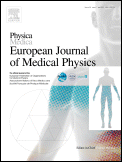
Physica Medica-European Journal of Medical Physics
Shaping the Future of Medical Physics ResearchPhysica Medica - European Journal of Medical Physics is a premier peer-reviewed journal published by ELSEVIER SCI LTD, dedicated to advancing the field of medical physics. Established in 1989 and serving as a critical platform for innovative research, this journal covers a broad spectrum of topics within biophysics, radiology, and imaging sciences, consistently ranked in the Q1 category across these disciplines. With an impressive impact factor that highlights its influence within the scientific community—ranking 52/333 in Radiology, 42/243 in Physics and Astronomy, and 35/152 in Biochemistry—the journal is a valuable resource for professionals, researchers, and students aiming to contribute to the technological and methodological advancements in medical physics. Physica Medica is committed to fostering open dialogue and collaboration within the global medical physics community, although it currently does not offer open access options. The journal's extensive citation history and ongoing relevance underscore its importance in the continuous evolution of medical science.

ATOMIC ENERGY
Illuminating the path of innovation in atomic science.ATOMIC ENERGY is a distinguished journal published by SPRINGER, focusing on pivotal advancements and research within the field of Nuclear Energy and Engineering. With an ISSN of 1063-4258 and an E-ISSN of 1573-8205, this journal has been a critical resource since its inception in 1956, serving both historic and contemporary scientific inquiries into nuclear technologies. Currently positioned in Q3 of the Nuclear Energy and Engineering category, ATOMIC ENERGY ranks 49 out of 77 in Scopus, representing a percentile of 37%, highlighting its relevance in the research community. While it is not an open access journal, it continues to draw a diverse readership eager to engage with the latest findings and innovations in nuclear science. The journal’s objectives include fostering collaborative research, sharing expertise, and addressing contemporary challenges in nuclear energy. As such, ATOMIC ENERGY remains an essential platform for researchers, professionals, and students alike, contributing significantly to the ongoing dialogue in the field.

Journal of Radiation Protection and Research
Fostering Collaboration for Enhanced Public SafetyJournal of Radiation Protection and Research, published by the Korean Association of Radiation Protection (KARP), serves as a pivotal platform for disseminating innovative research in the fields of radiation safety and health-related issues. With an ISSN of 2508-1888 and an E-ISSN of 2466-2461, this South Korea-based journal aims to bridge the gap between scientific research and practical application, emphasizing radiation protection, environmental health, and public safety. Though categorized in Q4 for Health, Toxicology and Mutagenesis, and Q3 for several other scopes as of 2023, the journal is dedicated to publishing high-quality studies that contribute to the improvement of safety standards and methodologies in radiation practice. The journal also provides valuable insights for practitioners in the healthcare and environmental sectors, making it an essential resource for researchers, professionals, and students alike who aspire to advance their understanding and application of radiation science. As the field evolves, so does the Journal of Radiation Protection and Research, which seeks to foster a collaborative and innovative academic community dedicated to ensuring safe and effective radiation use.
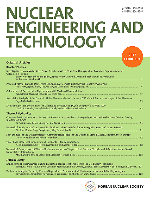
Nuclear Engineering and Technology
Exploring New Frontiers in Nuclear ScienceNuclear Engineering and Technology, published by the Korean Nuclear Society, is a premier Open Access journal dedicated to the rapidly evolving fields of nuclear energy and engineering. Established as a significant platform for scholarly communication since 2008, this journal has consistently anchored itself in the academic community, achieving a Q2 ranking in its category as of 2023, reflecting its influence and quality within the domain of Nuclear Energy and Engineering. With an impressive Scopus ranking of #15 out of 77, positioning it in the 81st percentile, the journal publishes cutting-edge research that addresses both fundamental and applied aspects of nuclear technology. Nuclear Engineering and Technology embraces an open access model since 2013, ensuring that valuable research is accessible to a global audience, thereby enhancing collaboration among researchers, professionals, and students passionate about advancing nuclear technology. The journal serves as an essential resource for those aiming to innovate and push the boundaries of knowledge in nuclear sciences.

Journal of Instrumentation
Pioneering research that shapes the landscape of instrumentation.Journal of Instrumentation, published by IOP Publishing Ltd, stands at the forefront of the fields of instrumentation and mathematical physics, playing a crucial role in advancing the knowledge and practice within these domains. With an ISSN of 1748-0221 and an esteemed position as a Q2-ranked journal in both categories as of 2023, it showcases high-quality research and innovative findings that contribute to the broader scientific community. Operating since 2006, this journal facilitates the dissemination of cutting-edge developments and interdisciplinary approaches in measurement techniques and their applications, making it a vital resource for researchers, professionals, and students alike. The journal maintains a competitive edge, ranked in the 59th percentile in mathematical physics and the 35th percentile in instrumentation according to Scopus rankings, reflecting its commitment to quality and impact. With a focus on accessible scientific communication, the Journal of Instrumentation is dedicated to nurturing a collaborative environment that promotes the integration of theoretical advancements and practical issues, providing an essential platform for sharing vital research discoveries.
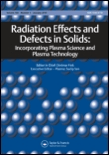
Radiation Effects and Defects in Solids
Innovating Solutions for Nuclear Energy and BeyondRadiation Effects and Defects in Solids is a prestigious academic journal published by TAYLOR & FRANCIS LTD that has been at the forefront of research related to the impacts of radiation on various solid materials since its inception in 1989. With an ISSN of 1042-0150 and an E-ISSN of 1029-4953, this journal serves as an essential resource for researchers and professionals in the fields of Condensed Matter Physics, Materials Science, and Nuclear and High Energy Physics. Despite its current categorization in the Q4 quartile across these disciplines, Radiation Effects and Defects in Solids remains critical for advancing knowledge of material responses to radiation, which is vital for applications in nuclear energy, space exploration, and radiation therapy. The journal publishes original research articles, reviews, and letters that provide insights into material properties, radiation dosimetry, and defect structures, fostering collaboration and innovation within the scientific community. As the field evolves, Radiation Effects and Defects in Solids continues to play a significant role in disseminating valuable research findings and keeping pace with emerging trends in materials science and radiation physics.

NUCLEAR INSTRUMENTS & METHODS IN PHYSICS RESEARCH SECTION B-BEAM INTERACTIONS WITH MATERIALS AND ATOMS
Illuminating the Path of Beam-Material InteractionsNUCLEAR INSTRUMENTS & METHODS IN PHYSICS RESEARCH SECTION B-BEAM INTERACTIONS WITH MATERIALS AND ATOMS, published by Elsevier, is a pivotal journal in the fields of nuclear and high energy physics as well as instrumentation. With an ISSN of 0168-583X and an E-ISSN of 1872-9584, this journal has been a significant contributor to the scientific community since its inception in 1983. Covering an extensive range of topics related to beam interactions with various materials and atoms, the journal serves as an essential resource for researchers, professionals, and students alike. It holds a respectable Q3 category ranking in both instrumentation and nuclear high energy physics as of 2023, indicating its relevance and quality within these domains. While the journal currently does not offer open access options, its invaluable findings are accessible through numerous academic libraries and institutions. With the publication's emphasis on fostering advancements in experimental techniques, instrumentation developments, and theoretical insights, it undoubtedly plays a crucial role in the ongoing progress and innovation in the field.

JOURNAL OF SYNCHROTRON RADIATION
Driving Discoveries in High Energy PhysicsJOURNAL OF SYNCHROTRON RADIATION, an esteemed publication by the International Union of Crystallography, is a leading journal in the fields of Instrumentation, Nuclear and High Energy Physics, and Radiation. With an impressive impact factor and categorized as a Q1 journal across multiple disciplines in 2023, it demonstrates a commitment to advancing knowledge and applications in synchrotron radiation science. The journal has embraced an Open Access model since 2022, providing unrestricted access to cutting-edge research for a global audience. Published bi-monthly, JOURNAL OF SYNCHROTRON RADIATION serves as a vital platform for researchers, professionals, and students seeking to engage with the latest findings, methodologies, and innovations in synchrotron techniques and technologies. With its rich history from 1996 to 2024, it is recognized as a key resource for those aiming to push the boundaries of material science, structural biology, and beyond.
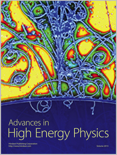
Advances in High Energy Physics
Exploring the Frontiers of Nuclear and High Energy PhysicsAdvances in High Energy Physics, published by HINDAWI LTD, is a premier open-access journal dedicated to the progressive field of Nuclear and High Energy Physics. With an ISSN of 1687-7357 and an E-ISSN of 1687-7365, this journal has been at the forefront of scientific discourse in high energy physics since its inception in 2007. The journal is notable for its impact within the community, currently holding a Q2 ranking in 2023 and positioned at #36 out of 87 in its category according to Scopus, highlighting its significant contribution to ongoing research and advancement in the field. Its accessible nature enables researchers, professionals, and students to engage with cutting-edge findings that shape our understanding of the universe. Spanning publications from 2010 through 2024, Advances in High Energy Physics serves as an invaluable resource for those looking to stay informed about the latest developments and methodologies in high energy physics across the globe.
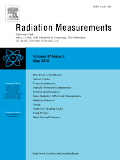
RADIATION MEASUREMENTS
Unveiling the Science Behind Radiation Phenomena.RADIATION MEASUREMENTS is a highly regarded academic journal published by Pergamon-Elsevier Science Ltd, focusing on the interdisciplinary field of radiation science and instrumentation. With an ISSN of 1350-4487 and an E-ISSN of 1879-0925, this journal aims to disseminate cutting-edge research and practical advancements from 1994 to 2024. It holds a commendable position in the Scopus rankings, being categorized in the top quartiles (Q2) for both Instrumentation and Radiation, reflecting its significance in the scientific community with a notable percentile of 64th and 59th, respectively. Although it does not offer Open Access options, the journal serves as a vital resource for researchers, professionals, and students seeking to explore innovations that shape the understanding and measurement of radiation phenomena. With a commitment to high-quality research, RADIATION MEASUREMENTS continues to contribute essential knowledge in the fields of physics and astronomy, positioning itself as a key publication for those dedicated to advancing radiation technology and its applications.